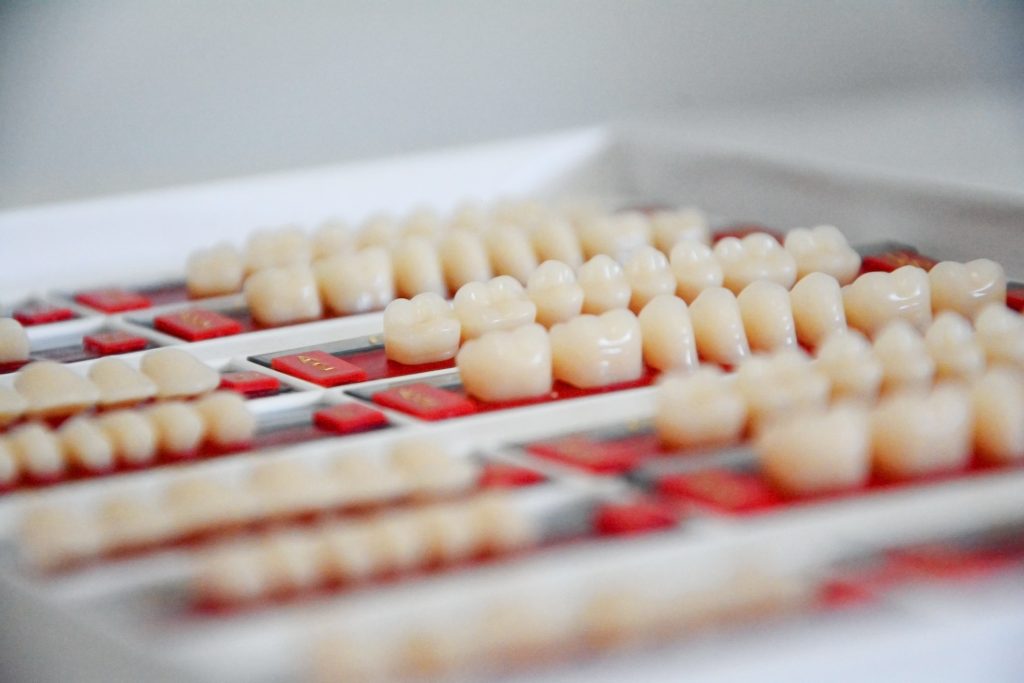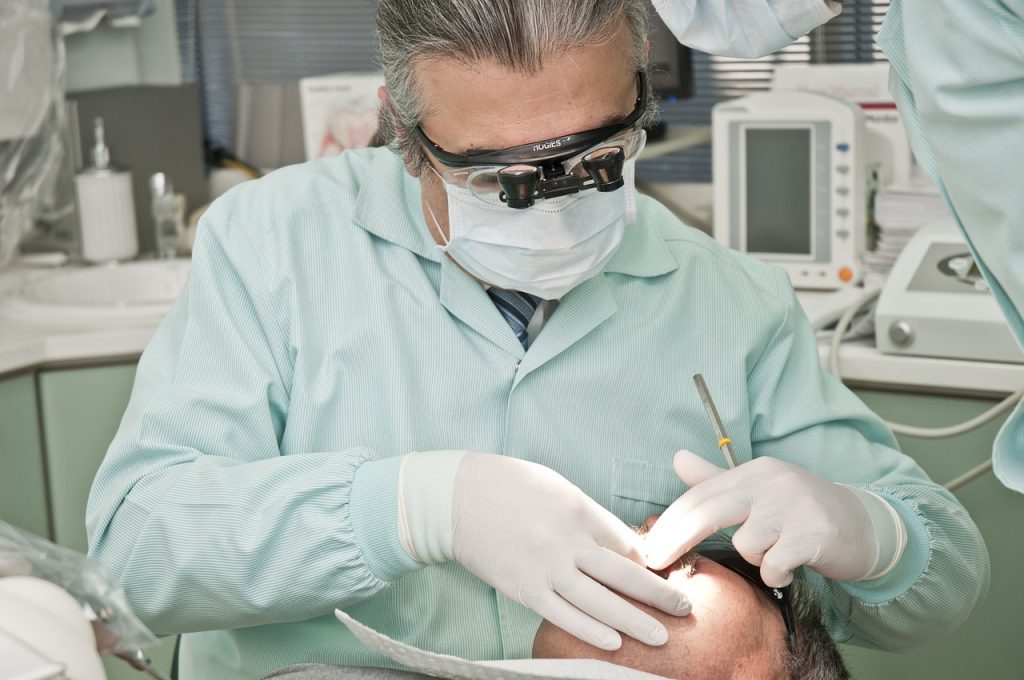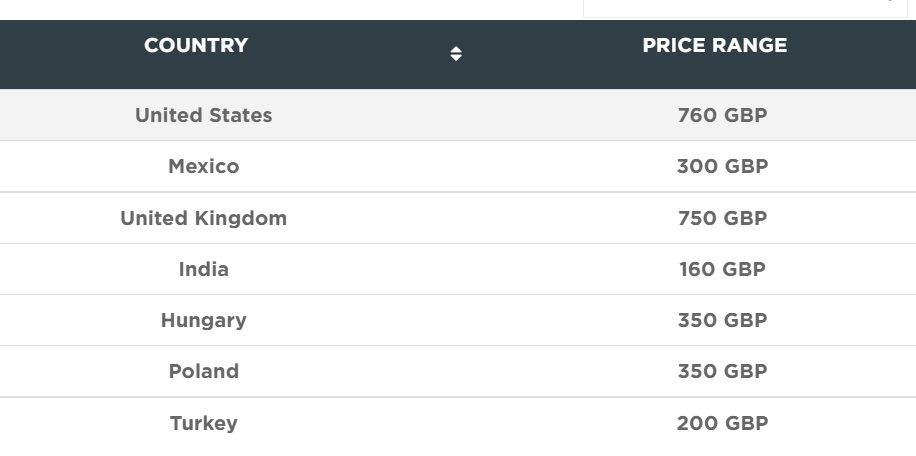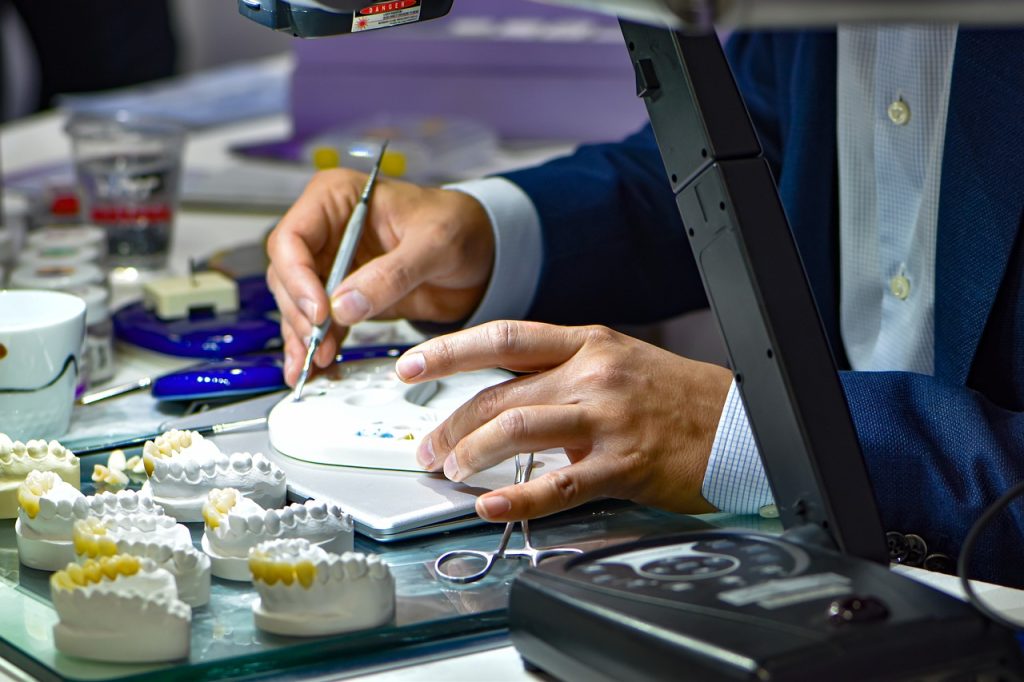
Show the clinics offering Dental crowns
What is a crown?
Over time, your teeth may get damaged. This can happen for various reasons such as: Caused by decay, injury, or the passage of time. The shape and size of the tooth may be lost. A crown is a tooth-shaped “cap” that fits over a tooth. Think of it as a cozy hat for your teeth. Crowns restore the tooth’s shape, size, strength, and appearance. The crown is cemented to the tooth and covers the visible part of the tooth. Why do we need crowns? A crown may be needed for a variety of reasons, including:
- It protects weak teeth (which may have decay) from breaking, or holds weak teeth together when part of it breaks.
- Restoration of broken or badly worn teeth.
- Covers and supports teeth with heavy fillings and few remaining teeth.
- Holds the dental bridge in place.
- Cover deformed or severely discolored teeth.
- cover dental implants
- Cover the root canal treated tooth.
What are crowns made of?
Permanent crowns can be made from a variety of materials. These materials may include:
- Metals: Metals that can be used for crowns include gold, palladium, nickel, and chromium. Metal crowns rarely chip or break, are the most durable in terms of wear and tear, and require the least amount of tooth removal. It can also withstand the force of biting and chewing. Metallic colors are the main drawback of this type of crown. Metal crowns are suitable for inconspicuous molars.
 Porcelain-metal fusion: This type of crown can match the color of the tooth adjacent to the crown. Gives a more natural tooth color. However, metal under the porcelain cap of the crown may show through as a dark line. Other disadvantages include the possibility of chipping or chipping of the porcelain portion of the crown and the possibility of the crown wearing down opposing teeth in the mouth. This wear on other teeth especially affects those teeth that contact above and below the crown when the mouth is closed. Porcelain crowns fused to metal are suitable for front teeth or molars.
Porcelain-metal fusion: This type of crown can match the color of the tooth adjacent to the crown. Gives a more natural tooth color. However, metal under the porcelain cap of the crown may show through as a dark line. Other disadvantages include the possibility of chipping or chipping of the porcelain portion of the crown and the possibility of the crown wearing down opposing teeth in the mouth. This wear on other teeth especially affects those teeth that contact above and below the crown when the mouth is closed. Porcelain crowns fused to metal are suitable for front teeth or molars.- All-Plastic: Plastic dental crowns are generally less expensive than other types of crowns. However, they wear out over time and are more likely to break than metal porcelain crowns.
- All-ceramic or all-porcelain: These types of crowns offer the best natural color match compared to all other crown types. Recommended for people with metal allergies. However, they are not as strong as porcelain-on-metal crowns.And they can wear the opposite tooth a little more in the mouth than metal or resin crowns. All-ceramic crowns are suitable for front teeth.
- Pressed Ceramic: These crowns have a hard inner core. Pressed ceramic crowns replace the metal inserts used in the production of all-ceramic crowns. Pressed ceramic crowns are covered with porcelain that offers the best natural color match.It is also more durable than all-porcelain crowns.
How is a tooth prepared for a crown?
Usually, there are two visits to the dentist to prepare the crown. In some cases, a crown can be made at the dentist’s office.
- During your first visit, we will examine and prepare your teeth for crown placement. An x-ray is taken of the tooth and the bone around it. A dentist may need to perform a root canal treatment before a crown procedure if there are caries, infection risk, pulp damage. The number of teeth to be removed depends on the type of crown. All-metal crowns are thinner and do not require as many teeth to be removed as all-porcelain or porcelain-metal crowns. After the teeth are shaped, a paste or putty is used to make a copy (also called an impression) of the tooth that will receive the crown. Impressions of the teeth above and below the crown-bearing teeth are also taken. This is to prevent the crown from interfering with your bite. The impression is sent to the dental laboratory. The crown is made in the lab and usually he sends it back to the dentist’s office after 2-3 weeks. During this first office visit, your dentist will fabricate a temporary crown to cover and protect your prepared tooth while you wait for your permanent crown.
- Second visit: Permanent crowns are attached to the teeth during the second visit. First, the temporary crown is removed and the permanent crown is checked for fit and color. If all goes well, a local anesthetic (a “numbing” drug) will numb the tooth and permanently fix the new crown.

Same day crown
A crown can also be made in a dental office if the dentist has the proper equipment. The process begins much like the traditional process of making a crown. The first step is to remove the cavities and shape the tooth to fit the crown perfectly. After these steps the actual creation of the crown will be different. On the same day, a digital photograph of the teeth in the mouth is taken using a scanning device (“wand”). Computer software creates 3D models of the teeth from these images. The digital design is then sent to another machine in the office to carve a crown shape out of a ceramic block. This method of manufacturing crowns is called computer-aided design/computer-aided manufacturing (CAD/CAM). In less than 15 minutes the crown is ready for cementation.
What problems can occur with crowns?
There are several problems that can develop with crowns over time.
- Discomfort or hypersensitivity: Freshly crowned teeth may feel tender immediately after the procedure as the anesthesia wears off. If the crowned tooth still contains nerves, it may be sensitive to heat and cold. Your dentist may recommend brushing your teeth with a toothpaste designed for sensitive teeth. Pain or tenderness when biting usually means that the crown is too high on the tooth. In this case, please contact your dentist. This problem is easy to fix.
 Chipped Crown: Porcelain crowns can chip from time to time. Minor chips can be repaired and the crown may remain in the mouth. If the chip is large or there are many chips, the crown may need to be replaced.
Chipped Crown: Porcelain crowns can chip from time to time. Minor chips can be repaired and the crown may remain in the mouth. If the chip is large or there are many chips, the crown may need to be replaced.- Loose crown: The cement holding the crown may wash out from under the crown. Not only does this loosen the crown, but it can also allow bacteria to enter and cause cavities on the remaining teeth.
- Crown Shedding: The crown can actually fall out. When this happens, it’s usually due to an improper fit or lack of cement. In this case, please contact the dental clinic immediately. Your dentist will give you specific instructions on how to care for your teeth and crowns before your appointment. Your dentist may be able to reattach the crown. If the crown cannot be reinserted, a new crown must be made.
- Allergic reactions: The metals used to make crowns are often a mixture of metals. You may be allergic to metals or porcelain used in crowns. However, this is extremely rare.
- Dark lines next to the gum line on crowned teeth: You may see a dark line next to the gum line on crowned teeth. This is normal. Especially if you have a porcelain metal crown. This dark line is just the crown metal showing through.
What is the lifespan of a crown?
Dental crowns typically last 5 to 15 years when more expensive and advanced types of crowns and materials are used. It also depends on your eating, drinking and smoking habits. The more you use it, the more it is exposed to daily wear and tear, and the more it is damaged by habits like grinding your teeth while sleeping.The more you practice these habits, the shorter your lifespan. Of course, proper oral hygiene is also of utmost importance.
How much are dental crowns?
 The cost of crowns varies by country and city. As a rule, this is due to the difference in the cost of living in a particular area and the rent of dental center locations. The cost of living in metropolitan areas such as London, Paris and Berlin is higher than in smaller cities around the EU, so dentists in big cities are trying to compensate with service fees. Countries such as Hungary, Poland, and the Czech Republic have a lower cost of living than the UK, US, and Germany, so the cost of dental crowns is also lower. New products on the dental market such as B. Crowns made of zirconium oxide are also expensive.
The cost of crowns varies by country and city. As a rule, this is due to the difference in the cost of living in a particular area and the rent of dental center locations. The cost of living in metropolitan areas such as London, Paris and Berlin is higher than in smaller cities around the EU, so dentists in big cities are trying to compensate with service fees. Countries such as Hungary, Poland, and the Czech Republic have a lower cost of living than the UK, US, and Germany, so the cost of dental crowns is also lower. New products on the dental market such as B. Crowns made of zirconium oxide are also expensive.
How much do dental crowns cost in the UK? In Wales, Scotland and England, porcelain dental crowns cost an average of £700-750 per crown fitted. Of course, these costs do not take into account consultations, examinations, CBCT scans, digital smile designs, temporary crowns or root canal surcharges. This costs around £200 in the UK. According to a recent press release, one in five of her UK dental patients had recently been overcharged by a dentist.
How much does a crown cost overseas?
Polish and Hungarian crowns are the cheapest among EU member states. On the other hand, crowns are the cheapest in Turkey and India. For this reason, Mexico and India are top medical travel destinations for American citizens. The latter offers the best deals for Australians. For citizens of the European Union and neighboring countries such as Middle Eastern countries, the best medical travel destinations consist of Eastern European countries such as Poland, Hungary and Czech Republic. These countries offer the best quality at the lowest prices in the region.


 Porcelain-metal fusion: This type of crown can match the color of the tooth adjacent to the crown. Gives a more natural tooth color. However, metal under the porcelain cap of the crown may show through as a dark line. Other disadvantages include the possibility of chipping or chipping of the porcelain portion of the crown and the possibility of the crown wearing down opposing teeth in the mouth. This wear on other teeth especially affects those teeth that contact above and below the crown when the mouth is closed. Porcelain crowns fused to metal are suitable for front teeth or molars.
Porcelain-metal fusion: This type of crown can match the color of the tooth adjacent to the crown. Gives a more natural tooth color. However, metal under the porcelain cap of the crown may show through as a dark line. Other disadvantages include the possibility of chipping or chipping of the porcelain portion of the crown and the possibility of the crown wearing down opposing teeth in the mouth. This wear on other teeth especially affects those teeth that contact above and below the crown when the mouth is closed. Porcelain crowns fused to metal are suitable for front teeth or molars. Chipped Crown: Porcelain crowns can chip from time to time. Minor chips can be repaired and the crown may remain in the mouth. If the chip is large or there are many chips, the crown may need to be replaced.
Chipped Crown: Porcelain crowns can chip from time to time. Minor chips can be repaired and the crown may remain in the mouth. If the chip is large or there are many chips, the crown may need to be replaced.